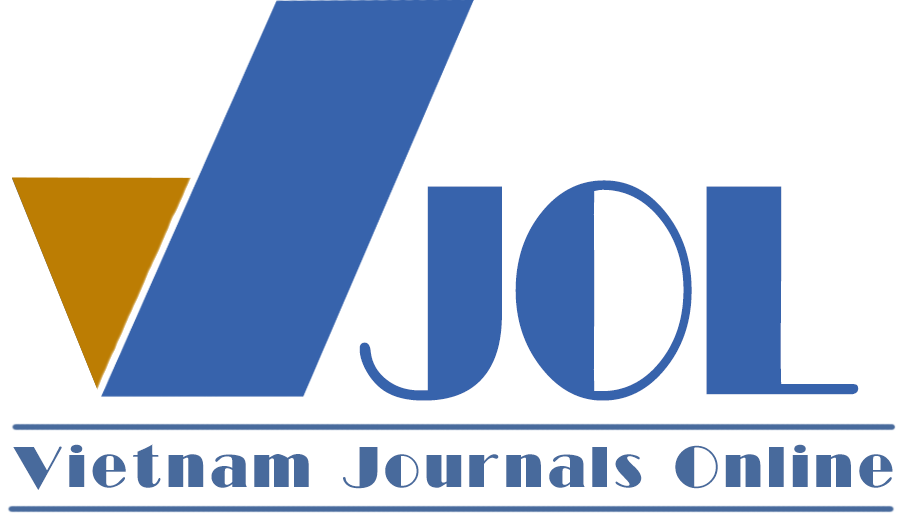APPROACHES TO APPLYING CRITICAL THINKING IN THE USE OF GENERATIVE AI IN GENERAL EDUCATION
DOI:
https://doi.org/10.18173/2354-1075.2025-0060Keywords:
Generative AI, critical thinking, AI in educationAbstract
This paper investigates the role of critical thinking in the evaluation and application of Generative Artificial Intelligence (GenAI) within general education. While AI models such as ChatGPT, Microsoft Copilot, and Google Translate have significantly influenced teaching and learning processes, they also introduce challenges related to information bias, contextual inaccuracies, and algorithmic distortions. By analyzing the underlying mechanisms of these GenAI systems, the study underscores the necessity of applying critical thinking when interpreting and utilizing AI-generated content. The paper proposes practical strategies for integrating critical thinking into educational practices and suggests tools that enhance users' understanding of GenAI while mitigating risks associated with AI bias. The findings contribute to the development of a more systematic and ethically grounded framework for GenAI-based education, promoting both pedagogical effectiveness and responsible AI use.
Downloads
References
[1] Brown, T., Mann, B., Ryder, N., Subbiah, M., Kaplan, J., Dhariwal, P., & Amodei, D. (2020). Language models are few-shot learners. arXiv preprint arXiv:2005.14165. https://doi.org/10.48550/arXiv.2005.14165
[2] Bird, C., Ford, D., Zimmermann, T., Forsgren, N., Kalliamvakou, E., Lowdermilk, T., & Gazit, I. (2022). Taking flight with Copilot: Early insights and opportunities of AI-powered pair-programming tools. Queue, 20(6), 35–57. https://doi.org/10.1145/3582083
[3] Vaswani, A., Shazeer, N., Parmar, N., Uszkoreit, J., Jones, L., Gomez, A. N., & Polosukhin, I. (2017). Attention is all you need. Advances in Neural Information Processing Systems, 5998–6008. https://doi.org/10.48550/arXiv.1706.03762
[4] Ennis, R. H. (1987). A taxonomy of critical thinking dispositions and abilities. In J. B. Baron & R. J. Sternberg (Eds.), Teaching thinking skills: Theory and practice (pp. 9–26). W. H. Freeman.
[5] Paul, R., & Elder, L. (2006). Critical thinking: Learn the tools the best thinkers use. Pearson Education.
[6] Halpern, D. F. (2014). Thought and knowledge: An introduction to critical thinking (5th ed.). Psychology Press.
[7] Facione, P. A. (1990). Critical thinking: A statement of expert consensus for purposes of educational assessment and instruction. The Delphi Report. ERIC Doc: ED315423. https://www.researchgate.net/publication/242279575
[8] Bhuttah, T. M. (2024). Enhancing student critical thinking and learning outcomes through innovative pedagogical approaches in higher education: The mediating role of inclusive leadership. Scientific Reports, 14, 24362. https://doi.org/10.21203/rs.3.rs-4864296/v1
[9] Wang, Q., & Abdullah, A. H. (2024). Enhancing students’ critical thinking through mathematics in higher education: A systematic review. SAGE Open, 14(3). https://doi.org/10.1177/21582440241275651
[10] Barbara, Z. L. (2024). Critical thinking in the age of generative AI. Academy of Management Learning & Education, 23(3). https://doi.org/10.5465/amle.2024.0338
[11] Brighid, G. (2023). Enabling critical thinking development in higher education through the use of a structured planning tool. Irish Educational Studies, 949–969. https://doi.org/10.1080/03323315.2023.2258497
[12] Vaswani, A. (2023). Attention is all you need. 31st Conference on Neural Information Processing Systems (NIPS 2017), Long Beach, CA, USA. https://doi.org/10.48550/arXiv.1706.03762
[13] Rossettini, G., et al. (2024). Comparative accuracy of ChatGPT-4, Microsoft Copilot and Google Gemini in the Italian entrance test for healthcare sciences degrees: A cross-sectional study. BMC Medical Education, 24. https://doi.org/10.1186/s12909-024-05630-9
[14] Bailin, S., Case, R., & Coombs, J. R. (2010). Common misconceptions of critical thinking. Journal of Curriculum Studies, 31(3), 269–283.
[15] Chen, X., & Xie, H. (2020). Application and theory gaps during the rise of artificial intelligence in education. Computers and Education: Artificial Intelligence. https://doi.org/10.1016/j.caeai.2020.100002
[16] Kristic, L., & Kristic, M. (2022). Artificial intelligence in education: A review. In 9th International Scientific Conference Technics and Informatics in Education, Čačak, Serbia. https://doi.org/10.46793/TIE22.223K
[17] UNESCO. (2019). Artificial intelligence in education: Challenges and opportunities for sustainable development.
[18] Chen, L., & Chen, P. (2020). Artificial intelligence in education: A review. IEEE Access, 8, 75264–75278.
[19] Byrne, M. S., & Johnstone, A. H. (1987). Critical thinking and science education. Studies in Higher Education, 12(3), 325–339.
[20] Howard, V. A. (1982). Artistry: The work of artists. Hackett Publishing.
[21] Hatcher, D. L. (2007). Stand-alone versus integrated critical thinking courses. The Journal of General Education, 55(3–4), 247–272.
[22] Nguyen, A., & Ngo, H. N. (2022). Ethical principles for artificial intelligence in education. Education and Information Technologies, 28(4), 4221–4241.
[23] Doshi, A. R. (2024). Generative AI enhances individual creativity but reduces the collective diversity of novel content. Science Advances, 10(28), eadn5290.
[24] Buruk, O. (2023). Academic writing with GPT-3.5: Reflections on practices, efficacy, and transparency. arXiv preprint arXiv:2304.11079. https://doi.org/10.31224/2861
[25] Lubiana, T. (2023). Ten quick tips for harnessing the power of ChatGPT/GPT-4 in computational biology. PLoS Computational Biology, 19(8), e1011319.
[26] Wambsganss, T. (2021). ArgueTutor: An adaptive dialog-based learning system for argumentation skills. In Proceedings of the 2021 CHI Conference on Human Factors in Computing Systems, 1–13.
[27] Ronald, T. K. (2008). Training writing skills: A cognitive developmental perspective. Journal of Writing Research, 1(1), 1–26.
[28] Ronald, T. K., & Bascom, A. R. (2007). Improving the writing skills of college students. Psychonomic Bulletin & Review, 14, 237–242.
[29] Chris, G., & Matthew, Q. (2017). Digital amnesia and the future tourist. Journal of Tourism Futures, 3(1), 73–76.
[30] James, R. S., Kathiravan, S., & Dean, M. K. (2024). The development and validation of the digital amnesia scale. Current Psychology, 43(22), 19594–19603.
[31] Lee, H. P., et al. (2025). The impact of generative AI on critical thinking: Self-reported reductions in cognitive effort and confidence effects from a survey of knowledge workers. Association for Computing Machinery, Article 1121, 1–22. https://doi.org/10.1145/3706598.3713778
[32] Hyde, S. J., Busby, A., & Bonner, R. L. (2024). Tools or fools: Are we educating managers or creating tool-dependent robots? Journal of Management Education, 48(4), 708–734.
[33] Bender, E. M., Gebru, T., McMillan-Major, A., & Shmitchell, S. (2021). On the dangers of stochastic parrots: Can language models be too big? In Proceedings of the 2021 ACM Conference on Fairness, Accountability, and Transparency, 610–623.
[34] Bianchi, F., Kalluri, P., Durmus, E., Ladhak, F., Cheng, M., Nozza, D., Hashimoto, T., Jurafsky, D., Zou, J., & Caliskan, A. (2023). Easily accessible text-to-image generation amplifies demographic stereotypes on a large scale. In FAccT ’23: Proceedings of the 2023 ACM Conference on Fairness, Accountability, and Transparency.
[35] Hòa, N. T. (2017). Bàn về tư duy phản biện trong giáo dục đại học. Tạp chí Khoa học Đại học Đồng Nai, (05), 23–30.
[36] Mat Said, N. A., & Bujang, S. M. (2020). Conceptualizing a critical thinking learning transfer model: A qualitative approach. Malaysian Journal of Learning and Instruction, 18, 111–130. https://doi.org/10.32890/mjli2021.18.1.5
[37] Nga, N. T. (2018). Phát triển tư duy phản biện cho học sinh trong mô hình trường học thông minh. In Kỷ yếu Hội thảo Quốc tế Giáo dục cho mọi người. Nhà xuất bản Đại học Quốc gia Hà Nội.







